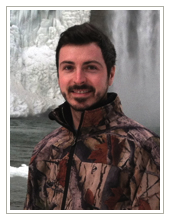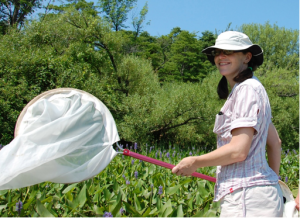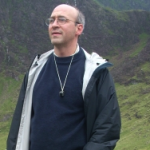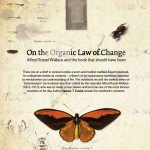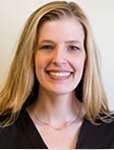 Dr. Thomas Werner, Assistant Professor, Department of Biological Sciences at Michigan Technological University, is presenting a talk titled, “The role of toolkit genes in the evolution of complex wing, thorax, and abdominal color patterns in Drosophila guttifera,” on Tuesday, August 13.
Dr. Thomas Werner, Assistant Professor, Department of Biological Sciences at Michigan Technological University, is presenting a talk titled, “The role of toolkit genes in the evolution of complex wing, thorax, and abdominal color patterns in Drosophila guttifera,” on Tuesday, August 13.
Dr. Werner became interested in the question “What is life?” as a four-year old child in his parent’s garden in former East Germany. By the age of 10, he began to develop a life-long interest in the biology of butterflies and moths. He has been breeding and collecting them ever since. For his Master’s thesis, he decided to shift his focus to molecular biology because this was a newly emerging field of biology that promised new jobs. Thus, Dr. Werner studied the human heart disease-causing virus Coxsackie B3 at the molecular level at Friedrich-Schiller-University Jena in Germany. After the fall of the Berlin Wall, Dr. Werner made one of his childhood dreams come true and moved to Sweden. He spent seven years in Umeå, working on his Ph.D. thesis about the innate immune response in the fruit fly Drosophila melanogaster. During this time at Umeå University in Dr. Dan Hultmark’s lab, he discovered and described a new family of immune genes that we humans share with flies and many other animals. In 2005, Dr. Werner shifted his research focus towards evolution of development (evo-devo) and worked as a postdoctoral fellow at the University of Wisconsin-Madison in Dr. Sean B. Carroll’s lab, where he established the fruit fly Drosophila guttifera as a new transgenic model organism to investigate how complex animal color patterns evolve.
Dr. Werner will be visiting the Jaenike lab for three full days, from August 12 through 14. If anyone wishes to meet with him during this time, please contact Dr. John Jaenike.
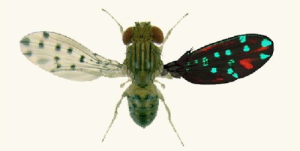
Drosophila guttifera: Left wing: natural color. Right wing: Vein Spot Enhancer (turquoise) and Intervein Shade Enhancer (red) drive the yellow gene to make the color pattern seen on the left.
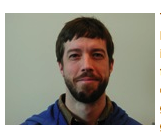 Dr. James Fry will be hosting Dr. Timothy Connallon’s visit on Friday, November 1. Dr. Connallon is a Postdoctoral Fellow in the Department of Molecular Biology and Genetics at Cornell University. He is presenting a talk titled, “Population genetics of adaptation in species with separate sexes.”
Dr. James Fry will be hosting Dr. Timothy Connallon’s visit on Friday, November 1. Dr. Connallon is a Postdoctoral Fellow in the Department of Molecular Biology and Genetics at Cornell University. He is presenting a talk titled, “Population genetics of adaptation in species with separate sexes.”

